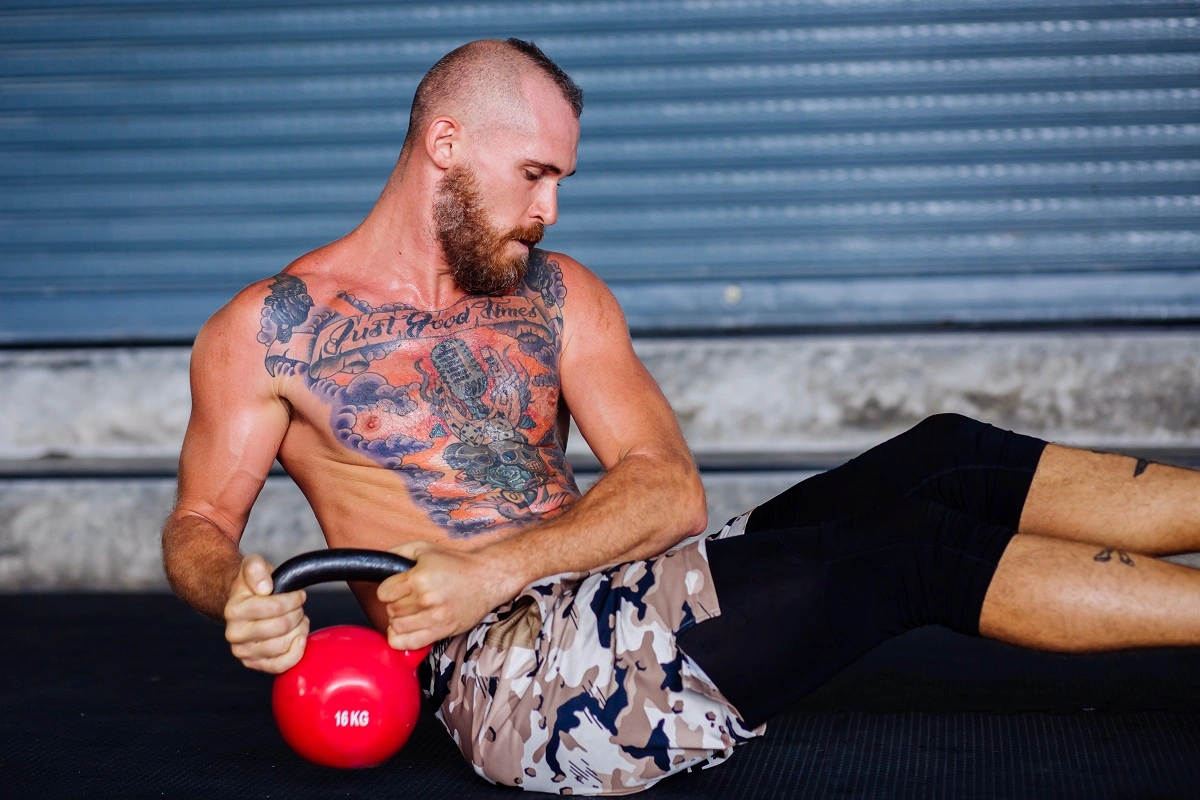The Murph workout is one of the most iconic and challenging fitness challenges, beloved by CrossFit athletes, military personnel, and fitness enthusiasts around the world. More than just a physical challenge, the Murph workout represents courage, sacrifice, and honor. These are deeply rooted in the fitness community. In this article, we'll explain everything you need to know about the Murph workout, including its history, rules, variations, strategies and tips, and common variations.
1. History of the Murph Workout
The history of the Murph Workout is rooted in legend and heroism. Named after Navy Lieutenant Michael P. Murphy, this workout pays tribute to the Medal of Honor recipient who died in combat during Operation Red Wings in Afghanistan in 2005. Known for his tenacity and leadership, Murphy performed this workout regularly and called it "Body Armor."
After his death, the CrossFit community began performing this workout in his honor, and it became known as the Murph Workout. The history of the Murph Workout tells the story of how a personal routine evolved into a worldwide tribute, celebrated every Memorial Day and known as the "Memorial Day Murph."
2. Murph Workout Rules
The standard Murph training rules are simple but challenging. The training consists of:
1-mile run
100 pull-ups
200 push-ups
300 air squats
1-mile run
All of this is done while wearing a weighted vest, which weighs 20 pounds for men and 14 pounds for women. Murph training rules require participants to perform the exercises in the order listed above, although the middle section (pull-ups, push-ups, squats) can be broken down into more manageable parts.
For example, many people choose to do 20 rounds of 5 pull-ups, 10 push-ups, and 15 squats, which also fits within Murph training rules. However, strict form is required in official competitions, and wearing a weighted vest is mandatory to achieve RX (prescription) status.
3. Modifications for the Murph Workout
Not everyone can perform the entire Murph workout as prescribed. That's why coordination is so essential for a Murph workout. These adjustments ensure the workout remains challenging and accessible for people of all fitness levels.
Common modifications to Murph training include:
No weight vest – Training without adding weight is a common and acceptable modification for beginners.
Assisted pull-ups – You can replace pull-ups by using a resistance band or performing ring rows.
Knee push-ups – These will help reduce tension and maintain good posture.
Reduced volume – Beginners can try the "Half Murph" (a half-mile run, 50 pull-ups, 100 push-ups, 150 squats, and a half-mile run) or the "Quarter Murph."
The appeal of Murph Workout modifications is their scalability. Whether you're a beginner or recovering from an injury, you can participate and benefit. It's the effort and dedication that count, more than the exact numbers.
4. Murph Workout Strategy and Tips
If you approach a Murph workout without a plan, you'll quickly tire. Therefore, understanding Murph workout strategies and tips is essential to completing it efficiently and safely.
Key Murph Workout Strategy and Tips include:
Pace yourself on the runs – If you go too fast, you will have difficulty transferring weight.
Partition the reps – Use strategies like doing 20 rounds of 5-10-15 (pull-ups, push-ups, squats) to avoid muscle fatigue.
Stay consistent – Find a rhythm from the beginning and stick with it.
Hydrate and fuel – Eat a light meal an hour beforehand and drink plenty of water.
Warm up properly – Don't let your guard down before you start. Dynamic stretching and mobility exercises are key.
By using these training strategies and tips from Murph, you can save energy and improve your times. Remember, this is an endurance event, not a sprint.
5. Murph Workout Variations
While the classic version is legendary, Murph workouts come in many variations to keep them fresh and tailor them to your specific needs. These variations range from pared-down versions to more innovative ones that offer new ways to tackle the challenge while still being challenging.
Popular variations of the Murph workout include:
Partner Murph – Two people split the reps and run together.
Team Murph – A group works together to complete the full reps.
No Run Murph – Replace the running with rowing or biking, useful for those with joint issues.
Double Murph – For the truly elite, do the entire workout twice.
Some Murph workout variations incorporate a variety of bodyweight exercises, such as burpees and lunges, depending on available equipment and space.
Trying different Murph workout variations throughout the year can help improve your overall fitness and keep your motivation high. Participants can also customize the workout to suit their own goals while respecting their background.
Final Thoughts
The Murph workout is more than a grueling fitness challenge. It's a test of courage, discipline, and respect. By understanding the history of the Murph workout, following its rules, making your own modifications, utilizing effective strategies and tips, and trying different variations, you'll be able to fully experience the spirit and intensity of this unforgettable workout.
Whether you're a CrossFit veteran or new to fitness, a Murph workout will provide a rewarding experience. When you finish that last mile, sweaty and exhausted, you'll know you've not only completed a workout, but also paid tribute to a hero.





